Most of us dream of having hunting property of our own to manage, or at least a hunting lease that lets us work the land. If you’re in the enviable position of drawing up habitat improvement plans, read on for first steps, tools, and strategies that will help you build the best deer food plots in your area.
In this article, we dive into all things deer food plots to help you map out your plans and attract mature deer and viable populations.
Deer Food Plot Design
How Much Land To Use for Food Plots
Experts say at least two percent of your land should be dedicated to food plots, so if you have 20 acres of land, carve out space for about a half-acre. However, the best answer to this question also factors in how your property is distributed, as well as deer density.
A “good” mix for whitetail habitat is 50/50, meaning half your land is open landscape and the other half is timbered. With this as the base, you’ll be better off making five percent of your total land (including timbered and open) food plots. If you have 200 acres, make 10 acres of food plots. If you have a high deer density, five percent should be the minimum. A high deer density is one deer per five acres. A healthy herd is about 15 deer per square mile, which averages out to be roughly one deer per 43 acres.
You might also want more food plot acreage if you’re surrounded by low-quality forage. Deer will travel long distances to feed on quality foods. Conversely, if you have vast land (1,000+ acres) and most of it is barren, you might plant two percent as food plots and keep them close to any water sources on the property.
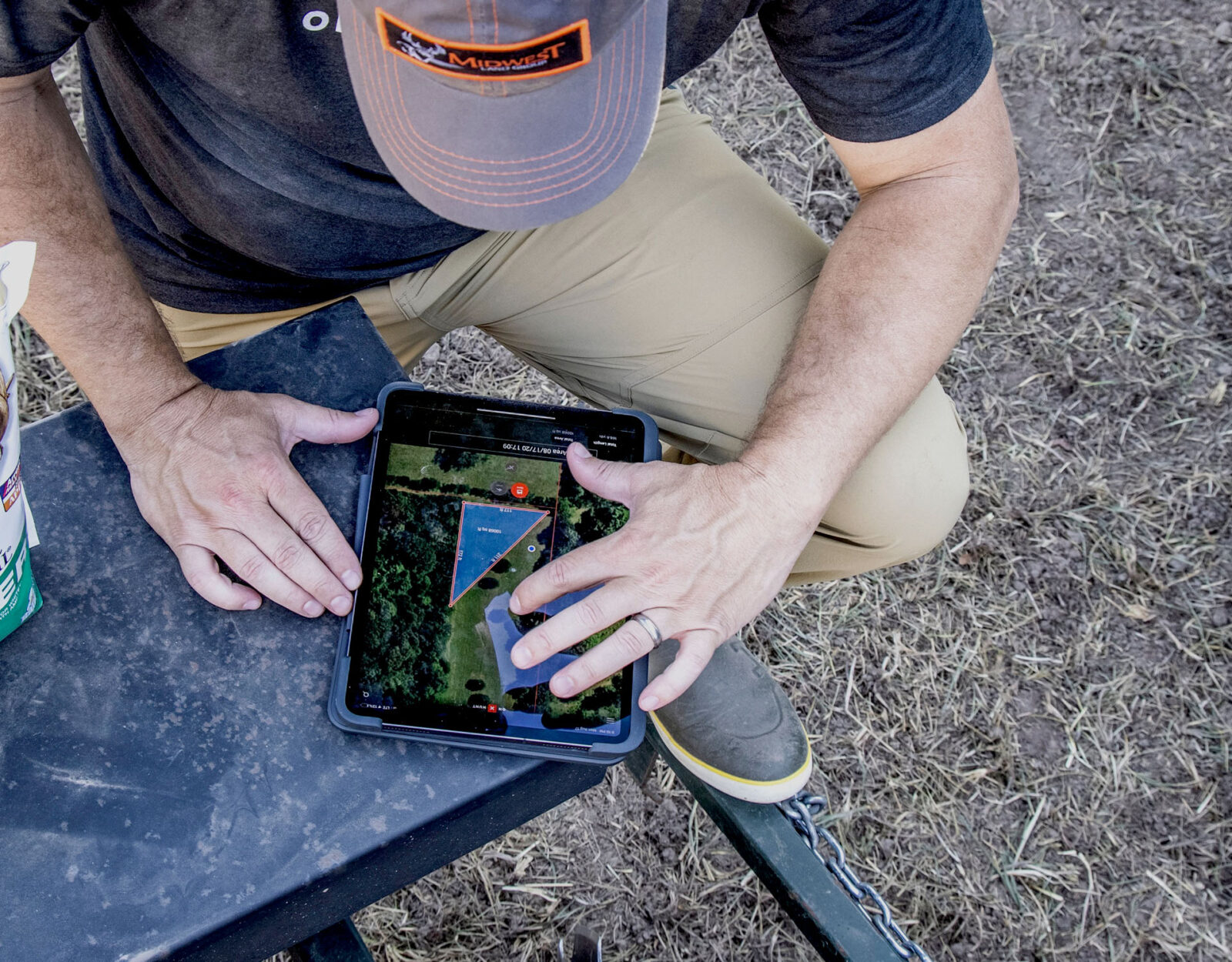
Food Plot Location
Remember, according to the Mississippi State University Deer Lab, “food plantings should simply supplement, but never replace, the natural deer habitat,” so the purpose of deer food plots is to provide high-quality forage during times of stress, such as winter and late summer. Understanding that more deer will rely on your food plot if it’s the best available forage during their most critical times of need, look for food plot locations that will provide as little stress as possible to access.
For better food plot locations, identify property boundaries, water sources, and wooded areas using the onX Hunt Satellite or Hybrid Basemap. Look for open areas near thick cover that are already growing ground vegetation. If an area can hold plant life, it can probably sustain a food plot. Deer are more likely to use your food plot if you put it next to brush and vegetation that makes them feel safe.
If your property is heavily wooded and it’s tough to see land features with Satellite Imagery, turn on Leaf-Off Imagery (if available for your state) for a better look at the ground floor. You may also consider timber stand improvement (TSI) plans to open up areas for food plots.
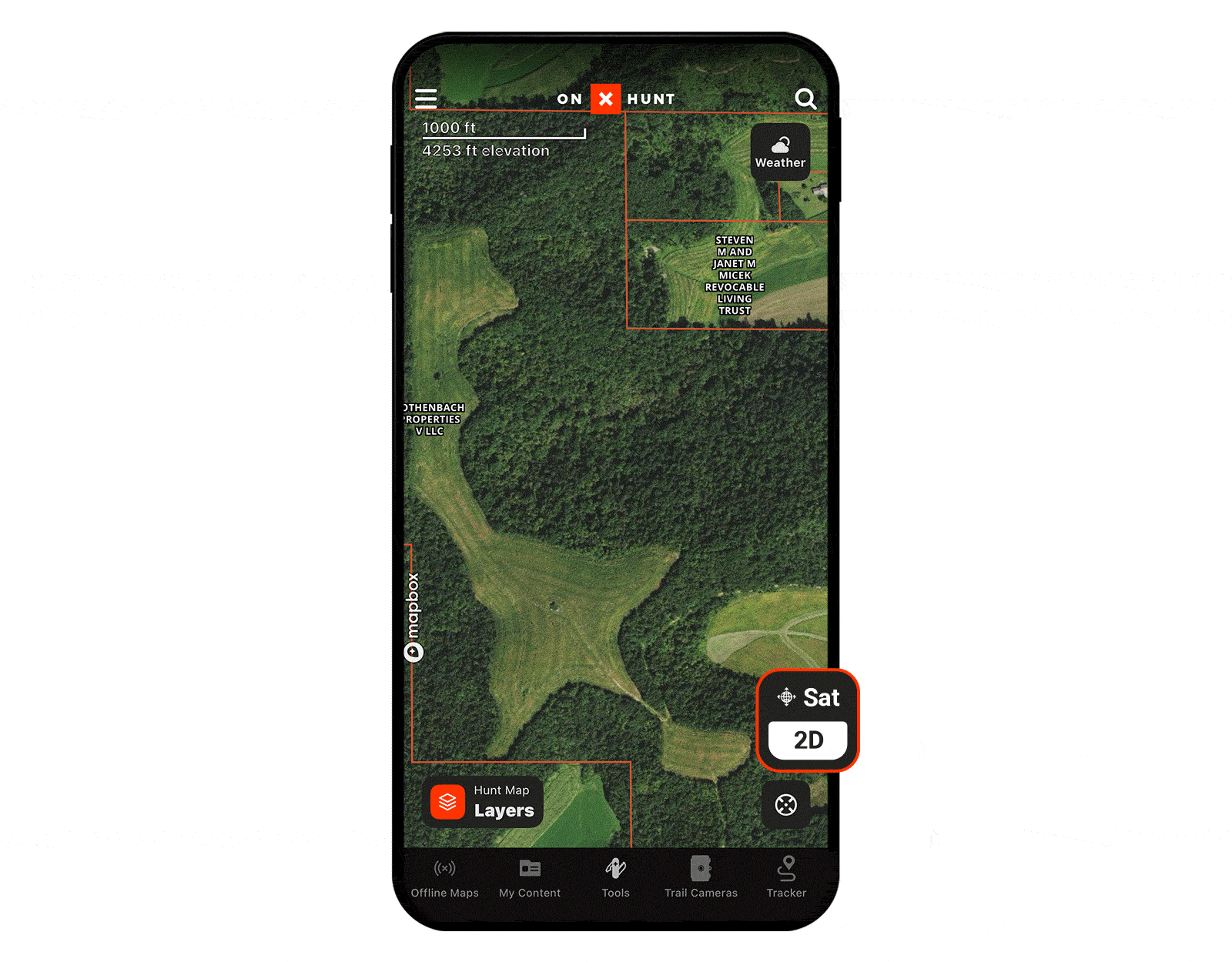
If Leaf-off Imagery is available in your area, select the Basemaps icon to toggle it on. Note: Leaf-off Imagery is available to Elite Members.
Next, verify that your food plot will have adequate sunlight, optimal stand locations nearby, and enough access so getting equipment to the area won’t be a struggle. Look for areas of safety, ideally with direct routes of travel to and from whitetail bedding areas.
Before planting your plot, pick out trees you can hunt from, intercepting deer on their way in or out of the plot. When earmarking trees for stands, ensure the predominant wind blows toward you. You can check this easily with Wind Direction on Waypoints and the Wind Calendar in the Hunt App or Web Map.
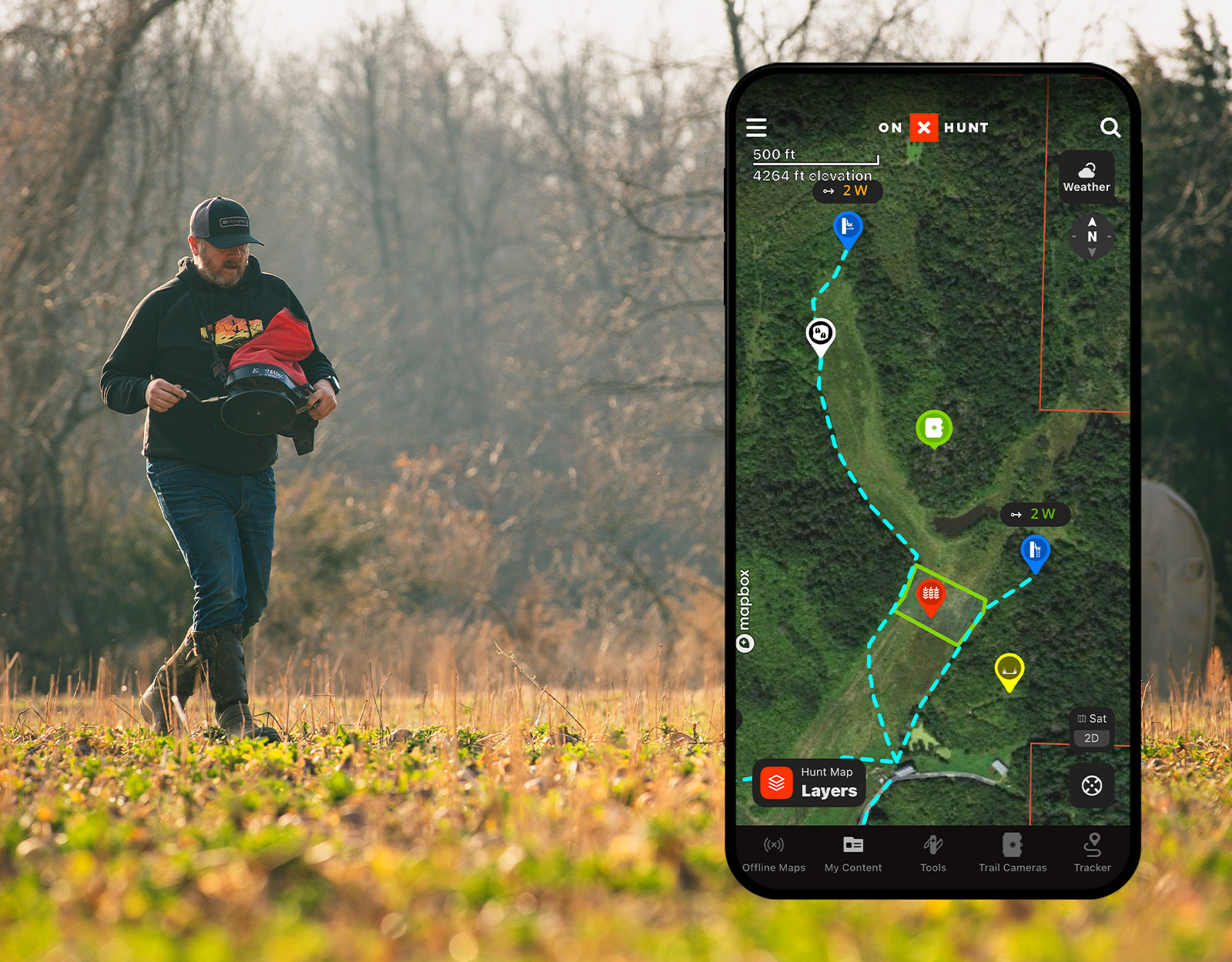
Before planting your plot pick out trees you can hunt from, intercepting deer on their way in or out of the plot.
Advantages of Multiple Plots & Plot Partitioning
If the land will accommodate it, designing multiple food plots or partitioning one plot into subplots has several advantages:
- It’s Good for Deer: Deer will have several changes to their nutritional needs throughout the year regardless of where your land lies within their range. Having diverse crops on your plots will make them more attractive to deer.
- Simplifies Planting: Multiple plots allow you to dedicate at least one to warm-season crops and another to cool-season crops, which minimizes seeding complexities. With a large enough field (~two-plus acres), subdividing it lets you plant at the ideal time for a given crop and your region, while allowing other plants to reach maturity.
- Supports Multiple Goals: Those with plenty of tillable ground can use some areas for destination feeding fields (particularly in the spring/summer) and others for hunting set-ups (fall/winter). For hunting set-up plot placement, look for areas with “soft edges” and thick transition-edge cover (think saplings, brush, planted pines) that make whitetails feel comfortable.
- Makes the Most of the Land: Aside from creating more opportunities to attract deer, multiple food plot locations help overcome seasonal weather patterns. For example, areas of the south deal with the duality of floods in the winter and droughts in the summer. If your property has the topography for it, place your fall and winter food plot upland to avoid flooding issues. Put your spring and summer food plot in the lowlands where plants can benefit from moisture for as long as possible.
Food Plot Shape
You don’t have to plant square or rectangular food plots. The food itself is the most important factor so as long as you have enough, it won’t matter what shape it’s in.
When thinking about food plot shapes, consider how the plot factors into your hunt strategy. Popular choices are an “L,” a “U,” or a figure-eight, the latter maximizing forage and offering a pinch point perfect for hanging a tree stand nearby. From a deer’s perspective, though, rectangular or circular plots allow them to see the entire open area from any one entry point.
Of course, be mindful of the equipment you’ll be using to create your desired shape; it can be a rough go turning a tractor with attachments around in a tightly shaped plot.
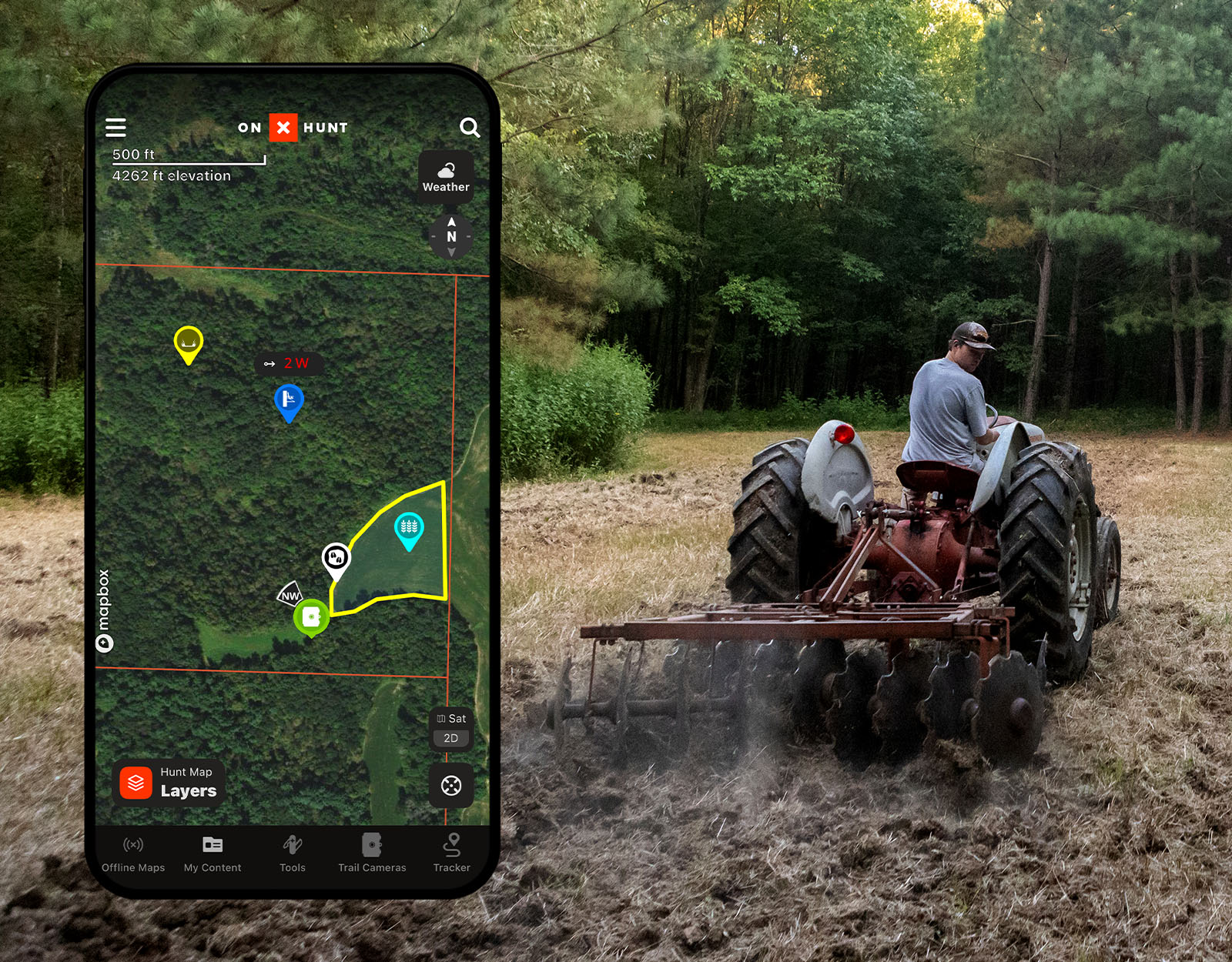
Growing a Food Plot in the Woods
If your land carries dense timber, or you’re simply interested, you can add a food plot in the woods. The enclosed nature of the space might even make deer feel more secure.
You may need to do some TSI to open the canopy to let sunlight reach the ground. You will also want to clear away dead leaves and pine needles, and lightly rough up the surface so your seeds can contact the soil.
Generally speaking, these types of food plots will be small (less than an acre) and they will be heavily shaded. This makes clover a top choice here.
Food Plot Soil Test
Once you’ve picked your food plot location(s), focus on achieving the right soil pH levels. The ideal soil pH for most plants falls between 6.1 and 7.0.
Regional Soil Differences
Areas with higher rainfall tend to have more acidic soil, meaning people in the East, Southeast, and Pacific Northwest may need lime to optimize their food plot soil.
Areas with less rainfall may have more alkaline soil; therefore, food plots in these areas may benefit from sulfur or other methods to make the soil more acidic.
If you live in the Midwest, you may be lucky enough to live by neutral soils, but you can always soil test to confirm you’re good to go.
DIY Soil Test Kits vs. Soil Labs
You can buy a soil pH testing kit at your local farm supply store and, in some cases, have your samples tested there as well.
You can also search for “soil testing lab near me” to find a soil science lab to test your sample, giving you more precise results and recommendations for soil amendments to correct pH imbalances. Typically, when you order a soil test from a lab, you’ll have the opportunity to indicate what you plan to plant, and your soil report will include fertilizer directions customized to your exact setup.
Amending Soil pH
If you need to increase soil pH (make the soil less acidic) a common practice involves applying lime. Bulk, pelletized, or liquid lime for food plots is typically applied about three months before planting so the lime has time to neutralize the soil.
If you need to decrease soil pH (make the soil more acidic), iron sulfate or sulfur will be your tools. You can pick soil acidifiers up at garden supply centers.
Adjusting soil pH can take a season or two; once you’re happy with the soil pH you can move to soil testing every two or three years.
Bulk, pelletized, or liquid lime for food plots is typically applied about three months before planting so the lime has time to neutralize the soil.
Deer Food Plot Fertilizer
With your soil test results in hand, you should have good insight into the amendments or fertilizer your food plot needs. If you choose to use a soil testing lab, you should receive a report that tells you exactly how much fertilizer per acre you need for your food plot, as well as what kind of fertilizer. In this way, using a soil testing lab can be more cost-effective than DIY as you won’t buy a bunch of different fertilizers in trial and error.
If you go the DIY route, resources are available to help you figure out how much fertilizer you need:
- Head to your local farm supply store or garden center.
- Check out university websites. Many colleges have dedicated soil science programs that maintain resources.
- Our partners at the National Deer Association (NDA), Land & Legacy, and Mossy Oak know more than a thing or two about food plots and have resources on fertilizer.
To improve fertilizer penetration, till or disc your food plot before applying fertilizer (rough up the top five or so inches).
Using a soil testing lab can be more cost-effective than DIY as you won’t buy a bunch of different fertilizers in trial and error.
Seeding Food Plots
Like with fertilizer, math is involved in calculating how much deer food plot seed you need. Use onX Hunt’s Area Shape tool to measure the exact size of your food plot so you don’t buy more seed than you need.
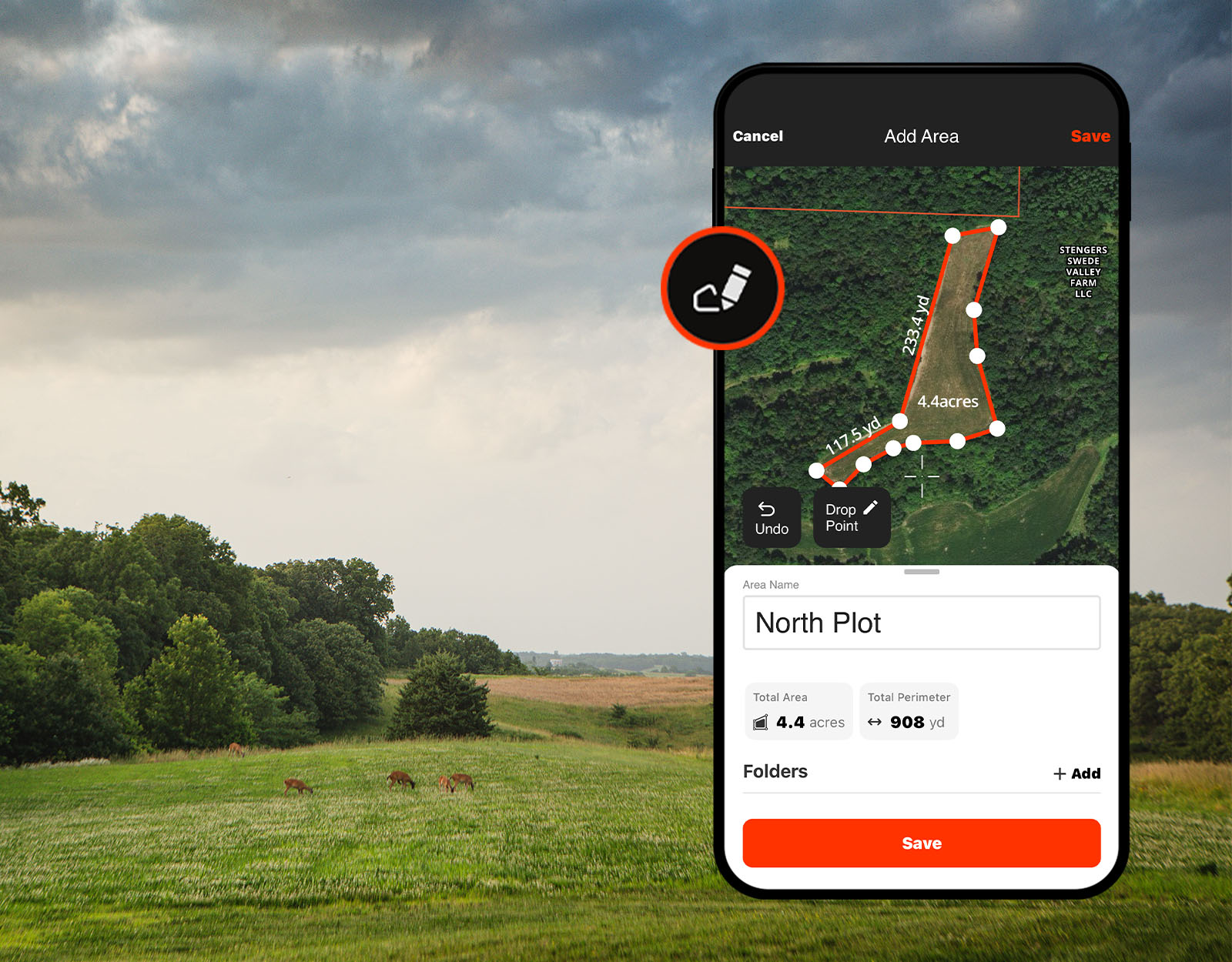
After applying fertilizer, run a cultipacker or drag over the plot to create a smooth bed. Plant your seeds (you can choose among many methods, including broadcasting, row planting, and drilling), then use the cultipacker or drag once more to cover your seed.
Two Seeding Mistakes
- Covering your seeds with too much dirt: Most food plot seeds will not germinate if covered with more than ¼” of dirt. Driving over the plot with an ATV or tractor to press the seeds into the dirt might be all you need.
- Not maintaining the crop: Most crops need mowing and weed control; keep an eye on them and consider adding a second round of fertilizer a few weeks after planting.
Use onX Hunt’s Area Shape tool to measure the exact size of your food plot so you don’t buy more seed than you need.
What Do Deer Eat? What To Plant & When To Plant
While deer in any area enjoy similar forage, there are regional and seasonal considerations to keep in mind. Below, we summarize the need-to-know basics about what deer eat and provide guidelines for planting timelines.
Choosing Food Plot Seeds
Plant a variety of seeds for a more resilient spread. If you plant a monoculture food plot, all the plants will be susceptible to the same risks and could fall prey all at once to drought, disease, or other risks.
Many resources can help you find seeds suitable for your region; Mossy Oak has a region-by-region food plot guide, Pheasants Forever offers food plot-specific and state-by-state CRP seed mixes, and NDA has regional planting tips.
You can also use the Hunt App’s US Crop Distribution Map Layers to assess the types of crops already available around you. Use that intel to plant something different to entice deer with options.
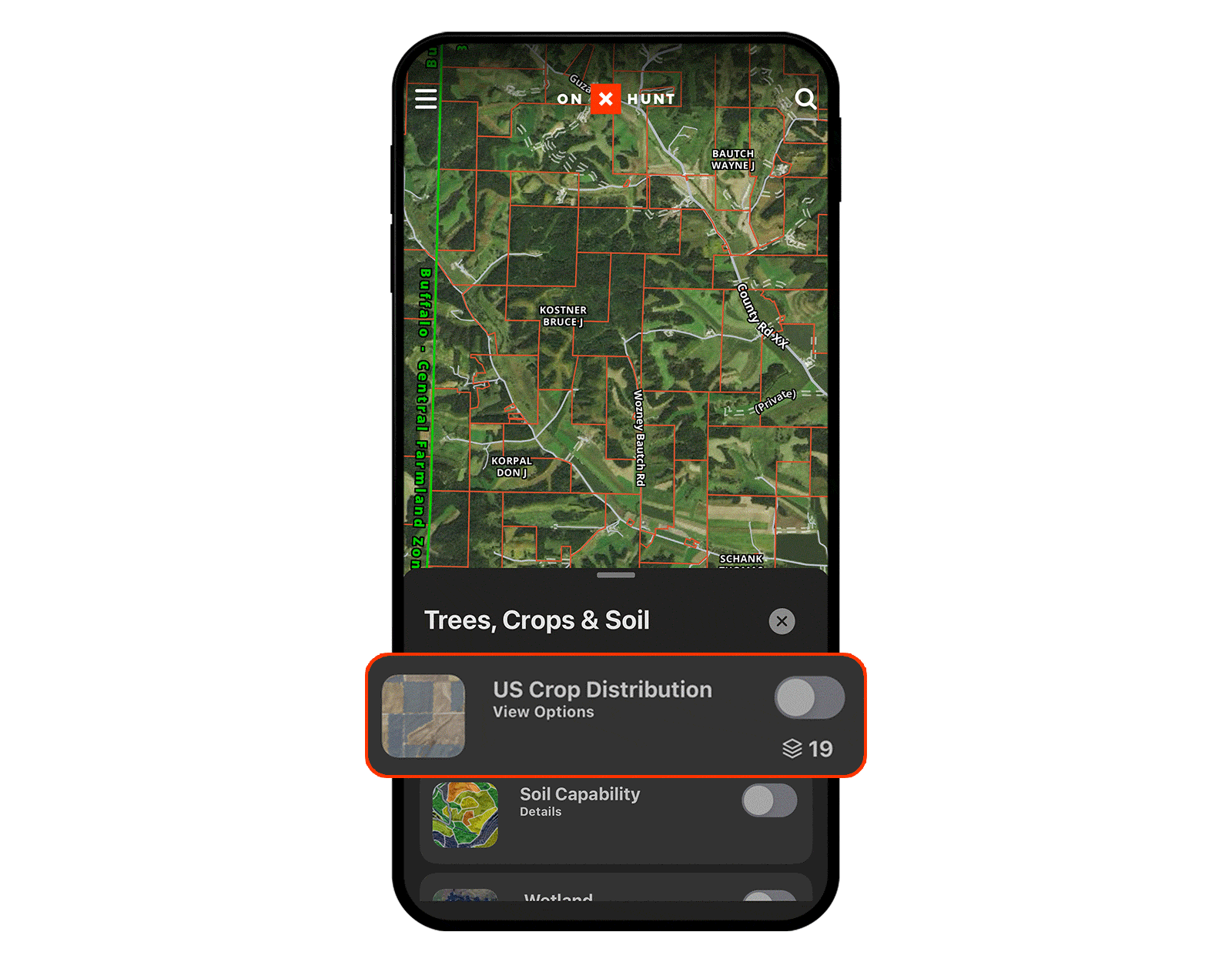
Use the Hunt App’s U.S. Crop Distribution Map Layers to assess the types of crops already available around you. Use that intel to plant something different to entice deer with options.
Spring & Summer Food Plots for Deer
Southern Food Plots: Warm-Season
- What to plant: Legumes (soybeans, cowpeas, clover, lablab), sunflowers, corn, and grain sorghum.
- When to plant: March/April.
While the southern region has agricultural crops that positively impact wildlife, they also have millions of acres of poorer soils covered in pine trees that make for low-quality native habitat. In these areas, warm-season food plots can attract deer.
With soils warm enough to plant in mid-April and frosts that may not arrive until mid-November, the South can get up to eight months of growth and forage out of a blend like Protein Peas or Game Changer Forage Soybeans. These long-lasting, slow-maturing annuals can have a major impact on nutrition for the deer when it is providing high-protein food for an extended time.
The downside to an extended growing season is that crops may still be producing great forage when it’s time to get your fall/winter plots planted in the same field. This is when it is beneficial to have fields large enough to use two separate crops, or at least leave some of the warm season crop standing while you prepare the other portion of the field for cool season food.
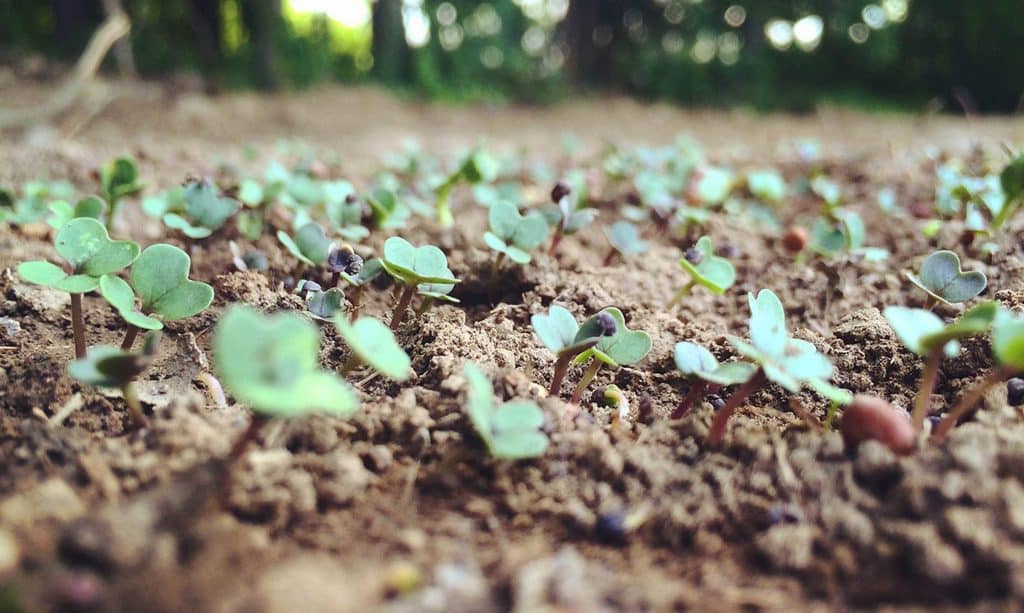
Midwest Food Plots: Warm-Season
- What to plant: Soybeans, clover, chicory, and cowpeas.
- When to plant: April/May.
Parts of the midwest have as few as four months conducive to growing spring/summer crops. This depends on how quickly the snow melts and soil temperatures rise, as well as when the first hard freeze sets in the fall.
For areas with rich and fertile soil, a warm season food plot such as BioLogic Spring Protein Peas may be planted mostly for attraction and keeping some deer at home. A lot of private land food plots in the midwest are competing with large agricultural fields full of soybeans and alfalfa, which is hard to beat if you’re a doe carrying fawns or a buck rebuilding its body and antlers.
With other high-protein food sources around, some research suggests warm-season food plots of fewer than three acres are a waste of time and money. In the northernmost states, warm-season annuals like peas and beans may only have 90-100 days to grow before it’s time to turn the field over for a cool-season planting. Your summer could be better spent managing other habitat improvement projects and getting ready to plant your fall food plot come August.
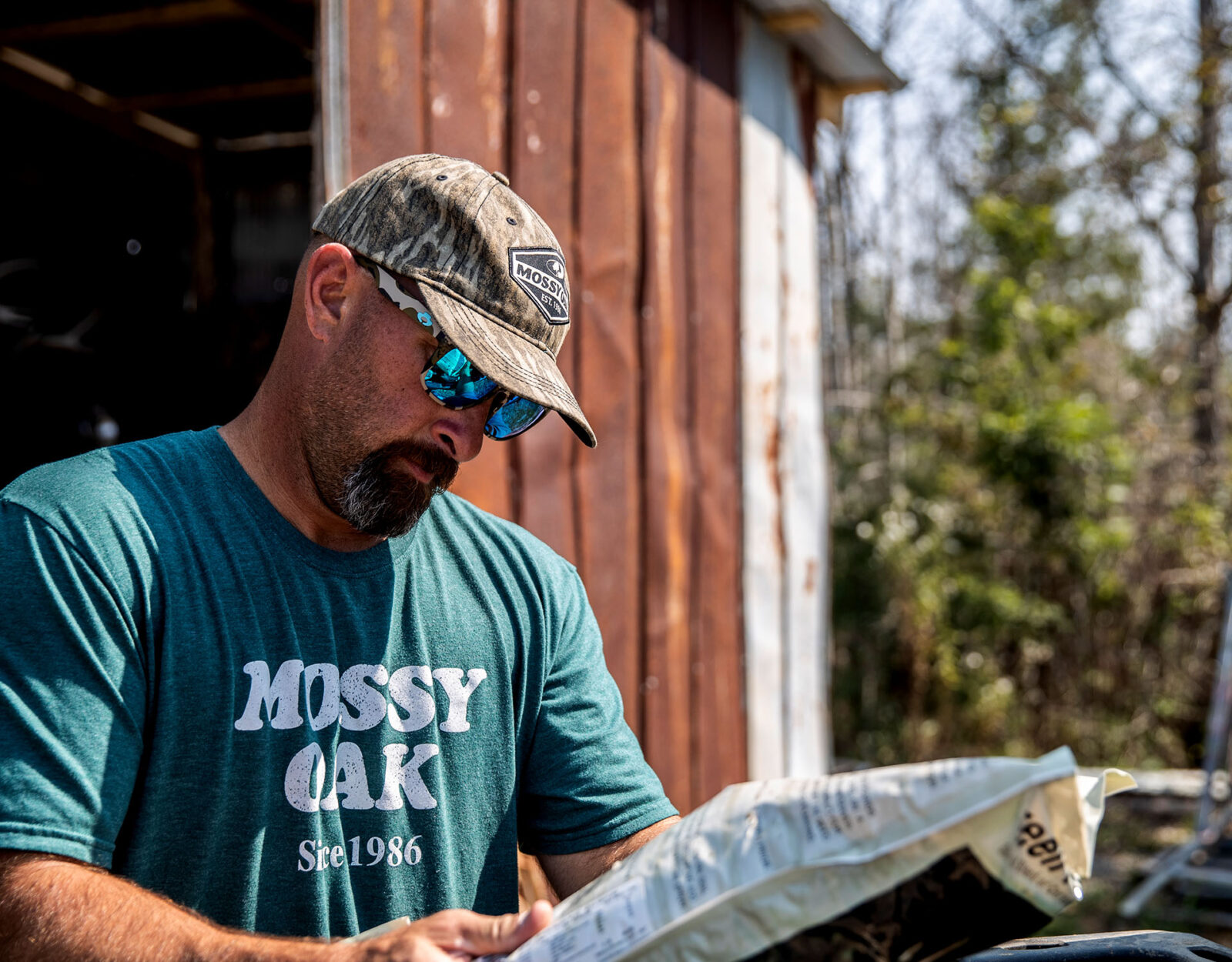
Frost Seeding
At the tail-end of winter, you may try frost seeding your spring food plot. As daytime temps warm and nighttime temps remain cold, the freeze-thaw cycle initiates a process known as “heaving,” which helps seeds embed in the soil. Small-seeded options like clover can work well with frost seeding.
There should be no or minimal snow on the ground when you frost seed as the seeds are at risk of washing away with snowmelt.
Fall & Winter Food Plots for Deer
Fall brings the rut, which is physically taxing on bucks especially (losing as much as 25% of their body weight). They’re traveling greater distances, fighting other bucks for dominance, and looking to breed with as many does as they can. For these energy-expensive tasks, whitetails are looking for carbohydrates.
Southern Food Plots: Cool-Season
- What to plant: Wheat, oats, rye, winter peas, and brassica.
- When to plant: 40-50 days before the first frost.
A combination of clover planted in the fall can provide deer with forage into the following summer. Wheat, oats, rye, winter peas, and brassica (e.g. turnips) work well in winter food plots.
In the south, these plants peak Nov-Jan, providing deer with a nutritious food source when other sources grow scarce.
In mid-winter, you can boost brassica, wheat, and oat production with nitrogen. Many legumes, like clover, go dormant mid-winter, so there’s no need to fertilize them.
Cool-season food plots in these areas may be more about attraction than nutrition. Although most anything you plant for a fall/winter crop in the South is going to have more nutrition than native plants at that time of year, southern deer aren’t relying on food plots as a survival source as they may in areas with colder temperatures and heavy snowfall.
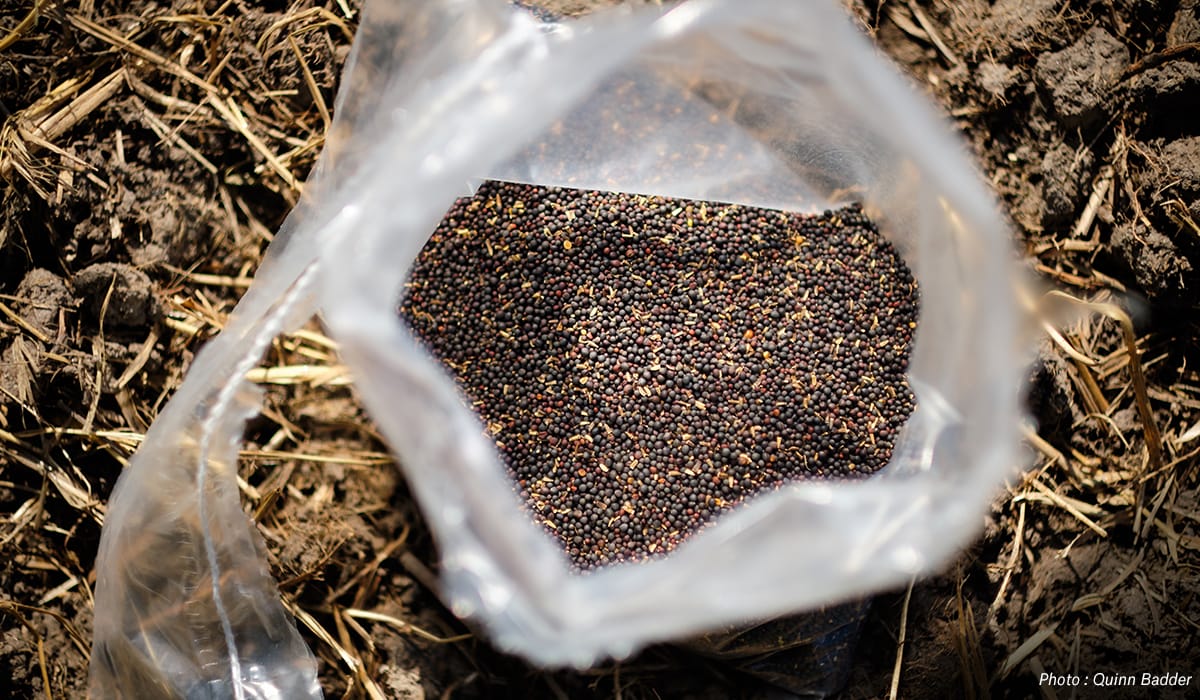
Midwest Food Plots: Cool-Season
- What to plant: Brassicas, especially rape, kale, turnips, and radishes.
- When to plant: 40-50 days before the first frost.
For this area, mid-July through early August is generally the time to get crops like turnips, radishes, and other brassica crops planted to get the amount of growth needed to feed the deer in a northern climate throughout the winter.
“You can plant most anything you’d like in fall food plots,” says the NDA’s Chief Conservation Officer Kip Adams, “but my go-to choices for the northern U.S. are brassicas and either winter wheat or winter rye. These species are inexpensive to plant and they provide attraction during the entire archery and firearms seasons.”
Brassicas include several varieties of rape, kale, turnips, true brassicas, and radishes. Wheat and rye are cereal grains. Brassicas are easy to grow and inexpensive, quality food sources for whitetails. Brassicas also produce ample forage and are excellent choices for anyone who can only plant small plots.
For more information on planting brassicas, the NDA outlines how to choose the best brassicas. They are fans of the most common planting: rape, also known as rapeseed or canola. “[It] germinates and grows very quickly. It is a very versatile forage and can tolerate cold, hot, and dry conditions, making it more productive during times when other forages are not.”
Looking for more information to help you decide what to plant in your food plot? Elite Members can open onX Hunt’s Soil Capability Map Layer for insights into the various types of soil on their property.
A Note on Acorns
If you have acorn-producing oaks around you, you may put less effort into your fall food plot and instead focus on winter forage. Sure, a buck might meander onto your food plot, but he also might just sit in the safety of the forest chowing down on acorns.
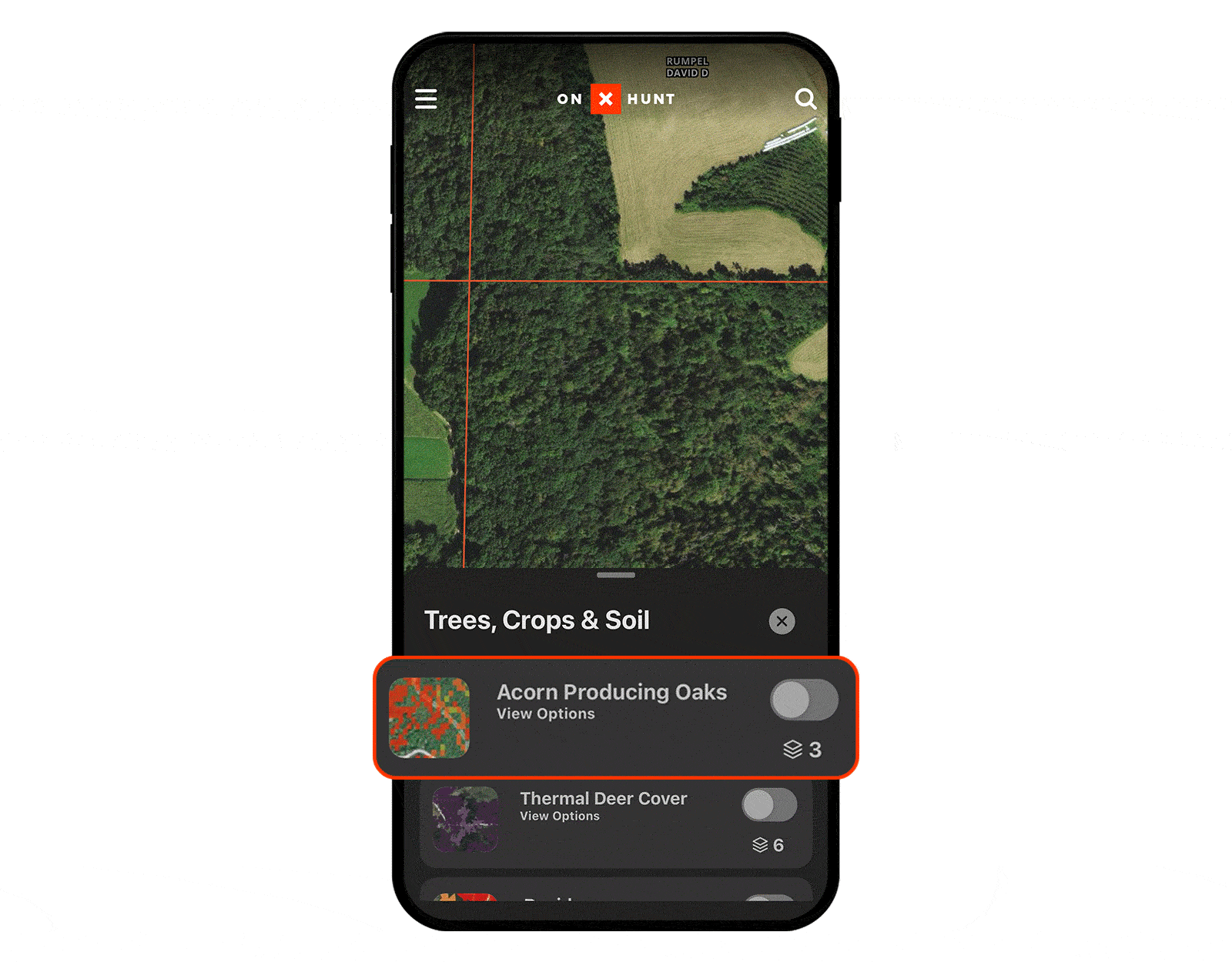
Open the Acorn-Producing Oaks Map Layer in the Hunt App to see how close the nearest array of oak trees is to your food plot.
Long-Term Food Plots
It’s worth considering the prospect of planting long-term food plots, such as a stand of apple, pear, plum, or persimmon trees. Though these take years to develop once planted, there’s not much work involved other than ensuring the survival of the saplings, and the trees will provide food for years to come.
Food Plot Equipment
The equipment you use depends on the size of your food plot(s) and your budget. If you’re just starting or are on a budget, you can get a lot of work done with a short list of tools.
If some of the bigger items aren’t in the budget, perhaps a friend can be bribed for the day. Or, if you have a farmer down the road, reach out. They’ll likely be willing to work your food plot for a reasonable price. You can also search for “farm equipment rentals”—some counties and local nonprofits rent useful equipment.
Food Plot Tools
- ATV/UTV
- Tool(s) to work the soil:
- Disc: Rows of round, sharp plates (discs) that spin to slice up the top 4-6 inches of soil to improve fertilizer penetration. Often good for large plots.
- Tiller: A roller of tines or blades that breaks up compacted soil. Often good for smaller plots.
- Cultipacker: A roller with ridges that can be pulled over the food plot before planting to make a smooth bed, and after planting to press seeds into the earth. Instead of a cultipacker, some people make DIY drags out of tires, chain link fencing, or pallets.
- Sprayer: Depending on your needs, you can use anything from a 2-gallon handheld sprayer to a 60+-gallon tank with a boom attachment.
- Spreader: As with sprayers, you can use anything from a 25-lb handheld broadcast spreader to a 50-lb push broadcast spreader to 850+-lb pull-behind cone spreaders.
- Mower: Good for cutting up dead weeds and clearing trails, you can opt for a push mower or a pull-behind.
- Watering method: If you don’t get sufficient rainfall, you’ll need to water your plot. How you do this depends on your land. Maybe you’re close enough to run a hose. Maybe there’s a creek nearby you can pump. Or, perhaps you need to put a big drum in the bed of your truck or UTV. If you’re running a long-term and large operation, you could consider subsurface drip irrigation, center-pivot irrigation, or other agricultural water management approaches.
- Chainsaw (for any minor clearing work needed)
- Eye protection
- Ear protection
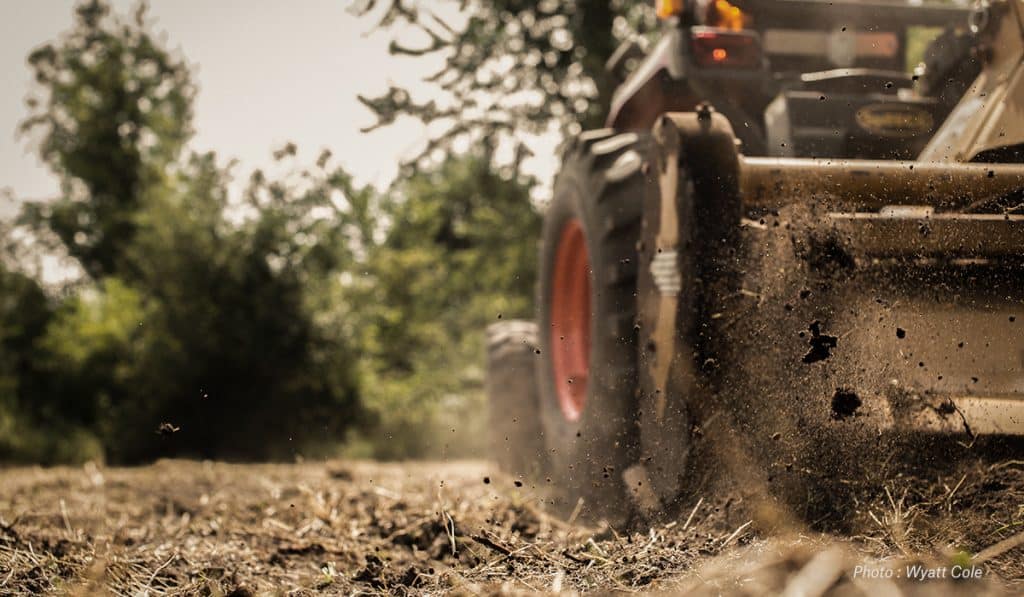
Light on Equipment? Try a No-Till Food Plot
If you don’t have the space, interest, or budget for big food plot equipment, you may be interested in no-till food plots. No-till top sowing involves spraying herbicide to kill the existing vegetation and broadcasting seed on top of the ground before a rainstorm to allow the rain to ‘drive’ the seed into the ground. This can be an effective alternative for small plots and for folks who do not have tractors, ATV/UTVs, or planting equipment.
Can You Hunt Over a Food Plot?
While no regulations prohibit you from hunting over a food plot on private land, research indicates you may want to give deer their space. If deer feel safe in your food plot, you may see increased daylight deer movement. Consider property designs that allow you to set your tree stand over a travel corridor instead.
If you want to hunt over your food plot, place your stand where you can come in undetected, facing into the prevailing wind direction. “I am a big fan of planting smaller hunting plots between known bedding areas and larger nutritional plots that I know deer are traveling to,” says Adams. “They often hit the hunting plots on the way to the larger plots.”
Fencing Your Food Plots
If using a food plot as a hunting set-up, plant your fall/winter crops and then fence off the area. Come opening day, take the fence down and you’ll have a lush spread to attract deer.
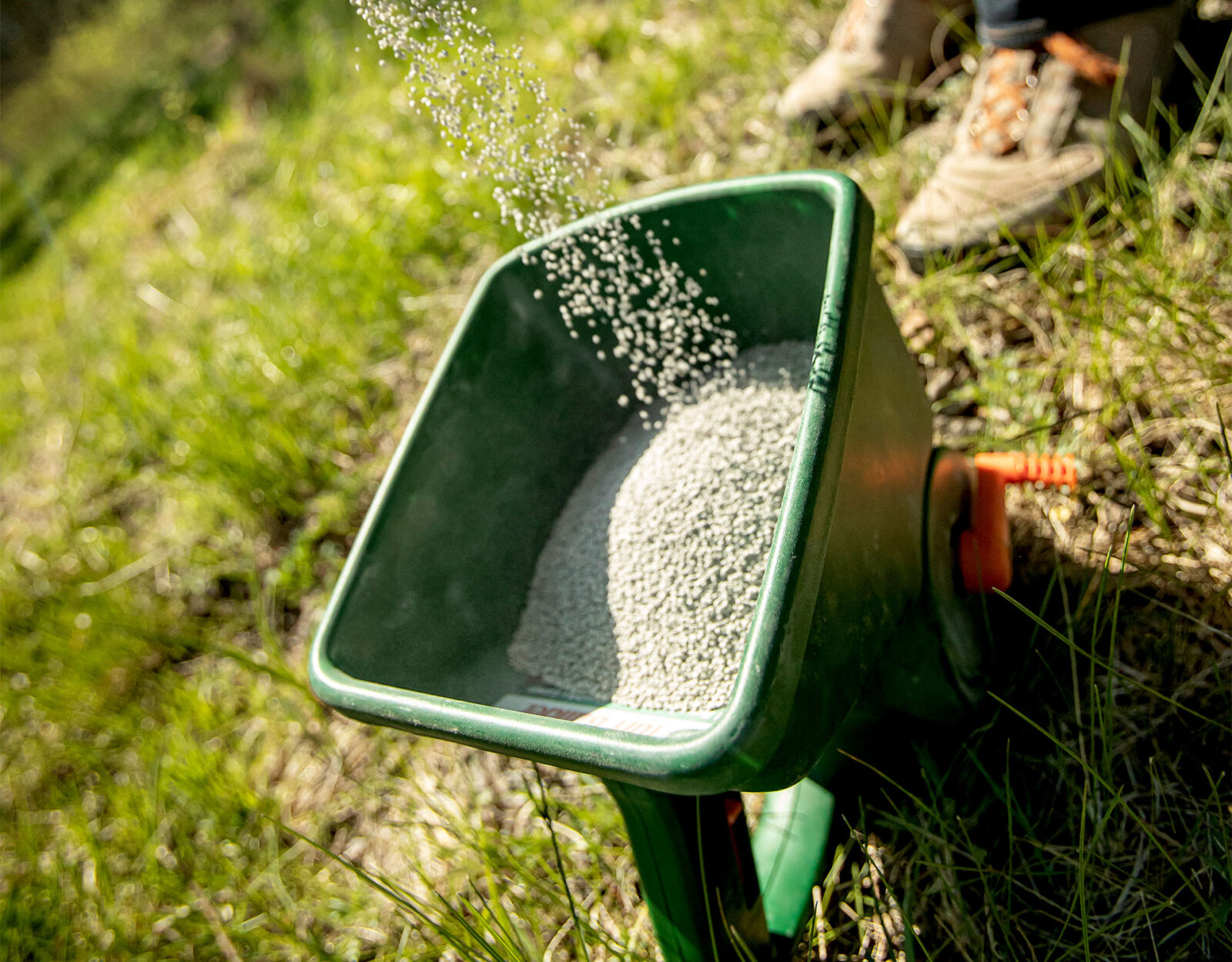
Final Thoughts on Food Plots
Planning and planting food plots can be an involved process, but also a rewarding one. Seeing quality, mature deer make use of the foods you worked to put in the ground, and better yet, harvesting deer from those fields, is almost intoxicating.
There is, of course, a lot to learn—but that too can be fun. If you have questions, ask experts and nearby farmers. Don’t be misled by companies ready to sell you things too good to be true (from seeds to fertilizer to tools). And don’t be afraid to fail. There’s always another growing season, another hunting season, and our failures make us wiser.
Upgrade to Elite for NDA’s Deer Steward Course
Elite Members have access to NDA’s Deer Steward modules.
Upgrade today to continue learning about habitat management for deer.